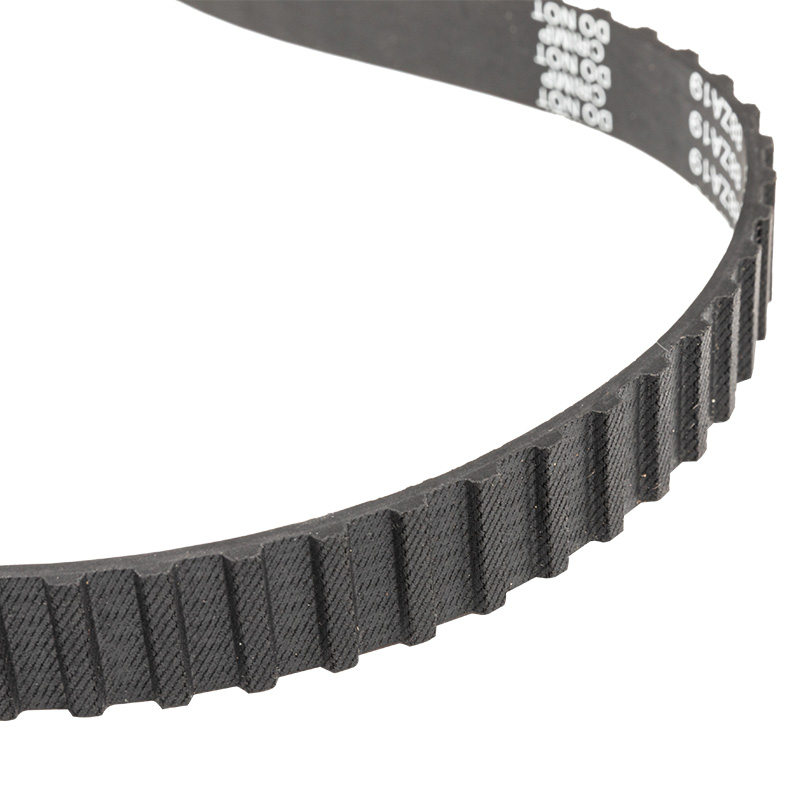Automotive V-ribbed belts, also known as serpentine belts, play a crucial role in the functioning of the alternator and other engine accessories. Here’s how they affect their operation:
Power Transmission: Automotive V-ribbed belts, commonly known as serpentine belts, are designed to efficiently transmit mechanical power from the engine’s crankshaft to various peripheral components. This power transmission is essential for the operation of critical engine accessories including the alternator, power steering pump, water pump, air conditioning compressor, and in some configurations, the radiator fan. The design of the V-ribbed belt allows it to maintain consistent contact with multiple pulleys, ensuring efficient power delivery with minimal slippage. This efficient power transmission is crucial for maintaining the overall performance and reliability of the engine’s auxiliary systems.
Alternator Functionality: The alternator is a key component that converts mechanical energy into electrical energy, which is used to charge the vehicle’s battery and power the electrical systems when the engine is running. The V-ribbed belt drives the alternator by connecting it to the engine’s crankshaft pulley. A properly tensioned and functioning V-ribbed belt ensures that the alternator operates at the correct speed, providing consistent electrical output. If the belt is worn, loose, or broken, it can cause the alternator to underperform or fail, leading to insufficient charging of the battery, dimming lights, and potential electrical failures that can affect the vehicle’s overall operation.
Accessory Synchronization: The V-ribbed belt is responsible for synchronizing the operation of multiple engine accessories by driving them simultaneously. This synchronization ensures that each accessory operates in harmony with the others, maintaining the overall balance and efficiency of the engine. If the belt slips, becomes misaligned, or breaks, it can disrupt the synchronized operation of these accessories, leading to performance issues or complete failure. For example, a slipping belt can cause the alternator to generate less power, the power steering pump to provide inconsistent steering assistance, and the air conditioning compressor to deliver reduced cooling performance. Therefore, the V-ribbed belt’s role in accessory synchronization is vital for the seamless operation of the engine’s auxiliary systems.
Efficiency and Reliability: V-ribbed belts are designed to offer superior efficiency and reliability compared to traditional V-belts. Their multi-ribbed design provides a larger contact area with the pulleys, enhancing grip and reducing the likelihood of slippage. This design also allows for better flexibility and heat dissipation, which contributes to the belt’s longevity. The improved grip and flexibility of V-ribbed belts result in more reliable performance of the engine accessories, ensuring that each component receives consistent power. This reliability is crucial for maintaining the overall efficiency of the vehicle, reducing the frequency of maintenance and the risk of unexpected failures.
Cooling System: The water pump, driven by the V-ribbed belt, is a critical component of the engine’s cooling system. It circulates coolant through the engine block, cylinder head, and radiator, maintaining optimal engine temperatures and preventing overheating. A properly functioning V-ribbed belt ensures that the water pump operates efficiently, providing consistent coolant flow. If the belt is damaged or broken, the water pump can fail to circulate coolant effectively, leading to engine overheating. Overheating can cause severe engine damage, including warped cylinder heads, blown head gaskets, and even engine seizure. Therefore, maintaining the integrity of the V-ribbed belt is essential for the proper functioning of the cooling system and the prevention of engine overheating.




 English
English 中文简体
中文简体

 View More >>
View More >> View More >>
View More >> View More >>
View More >> View More >>
View More >> View More >>
View More >> View More >>
View More >> View More >>
View More >> View More >>
View More >> View More >>
View More >> View More >>
View More >> View More >>
View More >> View More >>
View More >>
